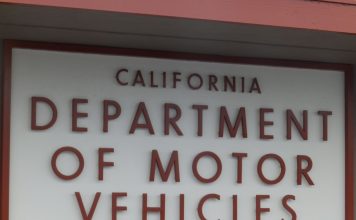Gilroy residents touted the importance of diversified urban design, fostering cultural vitality, and attracting economic investment at the city’s second community meeting Tuesday to discuss planning for the city’s high-speed rail station.
“I would really like to see more mixed-use development,” said Virginia Murillo, referring to a type of planning involving a diverse array of residential and commercial development. “I think that’s really healthy for a downtown area. It adds a lot to having more of a community feel in the city.
A dense, walkable urban environment should be a higher priority than mixed-use planning, said David Almeida, a resident and member of the Citizens’ Advisory Committee. Any planning around the tracks should maintain the urban character of the city’s downtown area, he said.
“I walk downtown almost every day, and at Old Gilroy Street, where the station starts, I feel like … the fabric of downtown is totally crushed where you just have this huge expanse of parking lot, and it’s suddenly not urban anymore. You don’t feel like you want to walk over there anymore.”
In 2008, California voters approved Proposition 1A to build a high-speed train system between Northern and Southern California. The high-speed train system would link the major population centers of Sacramento, the Bay Area, the Central Valley, Los Angeles, the Inland Empire, Orange County, and San Diego using more than 800 miles of track. Traveling at speeds of up to 220 miles per hour on a dedicated, separated track, the system could carry travelers from San Francisco to Anaheim in approximately 2 hours and 40 minutes.
Along with San Jose and Merced, Gilroy was selected as one of three station sites along the San Jose to Merced high-speed train section that would link San Francisco with the Central
Valley via the Pacheco Pass. Located approximately 30 miles south of San Jose and 95 miles southwest of Merced, the Gilroy station would serve Monterey County, San Benito County, and a substantial part of southern Santa Clara County.
The challenges of a more compact urban core need to be balanced with its benefits, said James Pearson.
“Everyone is moving toward higher density in the downtown core, which means more people, which means more students, which means more impacts on the schools,” Pearson said.
Residents cautioned against the possibility of dividing the city along economic lines. Ron Kirkish wondered whether the track might “Balkanize” the wealthier and poorer segments of Gilroy. Gail Briggs believed the new infrastructure and its surrounding development could foster the opposite result.
“I actually walk around the east side fairly often,” said Briggs. “I see that—whatever you want to call it—there’s gentrification taking place. People are buying older homes and improving them, and so I think that’s a good sign. So I think if we, say, had hotels on 10th Street, there would be a good chance that the area around that would improve.”
Whether the rail system would attract investment was a personal matter to Pearson, who hoped for economic diversification in Gilroy.
“It’s strange to me that all the conversation has committed us to being a bedroom community, said Pearson. We’re going to put our housing down there, people are going to get on it to go to San Jose to get to their jobs. But with high-speed rail, we have an opportunity to actually have some industrial base in Gilroy. I would love it for my daughter, who is going to be college-educated in a decade, to be able to work in Gilroy.”
Residents discussed how creative residential planning could yield multiple cultural, economic, environmental benefits. Housing downtown could be modeled after San Jose’s Santana Row, with apartments located above stores, Briggs said.
“The footprint is small, and you’re getting housing, which is a really big issue, but you’re also getting businesses to come here, “you’re making downtown alive,” Murillo said.
“Alive, right,” said Briggs. And right now it isn’t. I mean, you have a dead town.”
The possibility for increased violence was a major concern for Matthew Georges.
“A huge influx of people would lead to a bigger margin of error,” Georges said. “I’ve spoken to a few police officers, and they are already overstretched here in Gilroy, let alone with God knows how many people.”
Gilroy is currently in the middle of the “opportunities and constraints” segment of the planning
process, said Bruce Brubaker, lead project manager for consultant PlaceWorks. City staff and its consultant Placeworks are studying the potential effects of the high-speed rail on land use, transportation, economic development, and the environment, and the public’s opinions will be incorporated into its final report.
The 2005 Downtown Specific Plan will almost certainly be changed, said Brubaker. Rail line construction will require changes to the street network and other infrastructure.
After the Opportunities and Constraints phase is finished, city staff and PlaceWorks will examine alternative plans in 2016 and produce a state-mandated Environmental Impact Report, which should be completed in 2017 or early 2018, Brubaker said. Construction will begin after a final public and municipal review.














